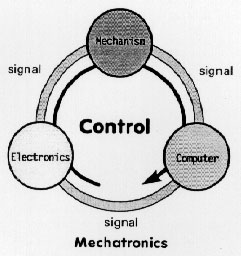
EDUCATION OF MECHATRONICS ENGINEERING AND
IMPLEMENTATION OF A MODULAR EXPERIMENT SYSTEM (1)
Jwu-Sheng Hu, Chin-Teng Lin, Kai-Tai Song, and Pau-Lo Hsu,
Department of Control Engineering
National Chiao Tung University
ABSTRACT
This paper presents the development of an integrated, practical, and innovative laboratory oriented modular experiment system for the education of mechatronics engineering. This paper also reports some research results of a system integration project, sponsored by the National Science Council of ROC, for the improvement of engineering education on mechatronics. The developed modular experiment system and laboratory course notes provide students a new environment to learn practical techniques and build up their system integration and analysis capability using up-to-date components, equipment, and techniques.
The terminology "mechatronics" was first introduced by a Yaskawa Electric engineer in 1969 [1]. Trademark rights were granted in 1972 [2]. As mechatronics became widespread in the world, Yaskawa in 1982 released all the rights pertaining to the trademark [3].
Mechatronics as a new word which represents a combination of "mecha" from mechanism and "tronics" from electronics. Mechatronics thus represents the development of new system integration technology which includes mechanics, electrical, electronics, hydraulics, pneumatics, control, computer, and signal processing as shown in Fig. 1.
The IEEE has published its first issue of "IEEE Trans. on Mechatronics" on March 1996 [4]. A technical committee on mechatronics, The International Federation for the Theory of Machines and Mechanism (IFTMM), provides a formal definition of mechatronics "Mechatronics is the synergetic integration of mechanical engineering with electronic and intelligent computer control in the design and manufacturing of industrial products and processes." [5]-[6]. This definition of the "mechatronics" highlights the scope of this emerging technology. Although mechatronics has a wide scope of applications and is a technology with multiple engineering disciplines, its key roles are computer, electronics, and the mechanical system to be controlled. Fig. 2 shows a conceptual representation of the mechatronics engineering. Mechatronics engineering got its momentum from microcomputer control and has been developed as an important branch of modern technologies.

Fig. 1. Conceptual representation of the mechatronics engineering. up
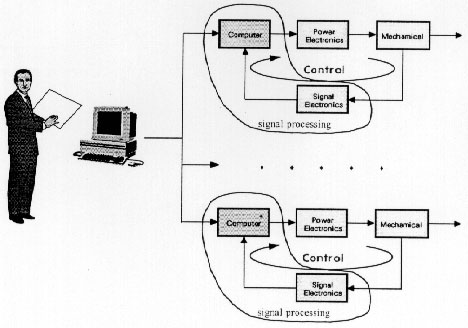
Fig. 2. Mechatronics: a system integration of computer, signal processing, power electronics, sensors, mechanical system, and automatic control. up
As the fast development in modern engineering technology, engineering education also becomes an important issue in recent years [7]-[18]. The wide scope of mechatronics engineering makes it extremely difficult to develop a unify course for engineering education.
For the purpose of developing practical laboratory system and course notes for education of mechatronics engineering, a project has been carried out by the Department of Control Engineering of National Chiao Tung University, ROC. This project tries to develop an integrated, practical, and innovative laboratory oriented modular experiment system for the education of mechatronics engineering. This project consists of five sub-projects, as listed in the following, which are focused on the education of how to integrate new technologies developed in control, electronics, computer, sensing and measurement, and motion control.
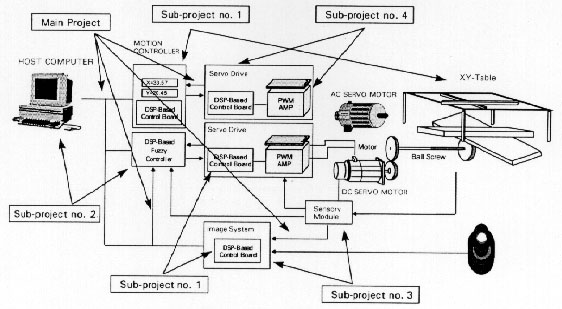
Fig. 3. Project architecture.
The final goal of this project is to construct a two-dimensional pendulum system which can be balanced upward or downward using neuro-fuzzy based intelligent control scheme with image feedback. Fig. 3 illustrates the architecture of this project. Sub-project no. 1 develops a DSP-based digital controller with related course notes in teaching digital signal processing and digital control. Sub-project no. 4 designs a PWM amplifier for the motor drive and with related laboratory notes in teaching power electronics and motor control. Sub-project no. 3 constructs a CCD camera system for real-time detection of the deviation angle of a swinging pendulum. This sub-project also develops laboratory course notes in teaching sensors and image processing.
Sub-project no. 5 constructs an XY-table with balancing mechanism for the moving pendulum. This sub-project also develops laboratory notes for teaching PLC sequence control and motion control. Sub-project no. 2 develops neuro-fuzzy based intelligent control schemes for the balancing control of the pendulum. This sub-project also develops laboratory course notes for teaching neuro-fuzzy control. The main project focuses on the integration of all these sub-systems together and develops a kernel course for education of mechatronics engineering using the constructed modular two dimensional pendulum balancing system.
The developed modular experiment system and laboratory course notes provide students a new environment for learning mechatronics. The purpose of this innovative laboratory course is to let students to build up their system integration and analysis capability using new components, equipment, and techniques. This paper presents the current status of development of the modular experiment system for education of mechatronics engineering. A series of experiments have also been developed based on the constructed modular experimental system.
Students majored in electrical, industrial, mechanical, or system engineering can make their study on mechatronics engineering at the third-year for a four-year engineering education. According to the aim of an interdisciplinary and practical study, basic and professional knowledge in electronics, mechanics and mechanical design are taught. A key course in the education of mechatronics engineering is a "mechatronic practice" where teams of four students are organized to develop and realize a mechatronic system by using the basic experimental modules. Significant in this course is its teamwork on carrying out an assigned mechatronic project with guide lines of design and analysis methodology, construction of the experimental system, presentation and the documentation of the results. The topics for the projects are usually evolving from current research and industrial partners.
Microcomputer Control (Sub-Project no. 1)
With the great advances in microelectronics and VLSI technology, high-performance microprocessor and digital signal processors (DSPs) can be effectively used to realize advanced control schemes [19]-[20]. Although the DSP had been developed primarily for application in the field of communication and signal processing, it becomes more and more popular to be used as a control processor because of fast numerical computation capability. Due to its fast computation speed, the DSP has replaced much of the complex control hardware by ROM-based software. This development trend has made software control to reach a new horizon in the applications of power electronics and motion control.
Due to its fast numerical processing speed, DSP has received much attention in many engineering area. The main reason is that advanced engineering research such as controls, communication, and signal processing can enhance the performance of their results by using DSP. In the competitive environment of today's global economy, it is vital to improve the quality and efficiency of commercial and industrial products in order to survive. Meanwhile, the domain of high added-value products usually involve application of advanced technology and the effort of improvement also contribute to the advance of the industrial level. Therefore, how to establish the man power in the DSP's application area is an important problem for our country.
This sub-project plans to develop a set of modular teaching tools and laboratory course notes for the teaching of digital signal processing and digital control. In addition to developing basic software and hardware laboratory course notes, the project is going to be integrated with other projects, under coordination of the main project, to construct teaching tools and material in the area of mechatronics. They include: design and manufacture modular hardware model for DSP experiments, high-and low level language teaching material and tools, for software programming, and hardware and software integration as well as integration of target mechatronic systems with other projects. In the first year of this sub-project, the following laboratory course notes have been developed.
Real-Time Software
The concept of system integration by software control should be especially emphasized in the education of modem mechatronics engineering. With the advance of microelectronics, programmability both in software (µP, DSP) and hardware (PLD, FPGA) makes system design with great flexibility. Real-time multi-tasking operating system becomes the software kernel for most mechatronic systems. Real-time software is characterized by its interrupt-driven nature. Real-time software differs from conventional software in its requirement of the execution of the "running task" in "real-time" when it is activated by an interrupt. The interrupt may be either software or hardware triggered. The scheduling of priority, task partition, and interrupt mechanism are important in the design of real-time software for a mechatronic system. A real-time kernel for the DSP TMS320C50 has been developed for teaching of real-time programming.
Intelligent Control (Sub-Project no. 2)
Control technology has made a giant progress in the past several years due to the fast development in microelectronics, sensors, power electronics, and control theory. Such progress is especially influenced by the fast development of advanced microprocessors for control applications.
Advances in microelectronics and modem control theory now has made it possible to devise very sophisticated digital controllers in recent years. However, because the progress in software control technology is much behind the hardware control technology and therefore much of the potential of hardware are still undiscovered. This condition is getting worse due to the recently developed high-performance digital signal processors. Today it is easy for a system design engineer to select a microprocessor or DSP for his application, however, it is relative hard to find suitable CAD and software development tools for the design and realization of the controller.
Intelligent control is a model-free control technology that combines artificial intelligence and control methodologies. It achieves control purposes based on expert knowledge and experience expressed in the form of (fuzzy) IF-THEN rules or neural networks. It is contrasted with the traditional control schemes in the requirement of precise mathematical models. However, due to the lack of a precise mathematical derivation, the design of an intelligent controller usually relies heavily on expert knowledge and trial-and-error based learning process.
As a result, proper laboratory experiments are imperative to the education of intelligent control. Since intelligent control aims at controlling the systems that are too complex to be described by precise mathematical models, current implemented intelligent control systems, such as mobile robot navigation systems, robot hand-eye coordination systems, are often large in scale. Such kind of systems are either too complex (both in mechanic structure and control interface) to be understood thoroughly by students or the cost of facility is too high to be popularized in teaching laboratories. Hence, they are not suitable for normal experimental teaching even though they may be good for research.
The goal of this sub-project is to develop a series of attractive and popular teaching experiments on intelligent control, including the development of neuro-fuzzy control module, the single-axis position control of a crane, and the XY-axis position control of crane with camera feedback. With these experiments and well-designed teaching material, students can learn the way to construct a mechatronic system from the basic analysis of mechanic structure to the design of intelligent control schemes.
This sub-project has developed an efficient pipelined, single-instruction-stream, and single-data-stream (SISD) architecture for the fuzzy reasoning processor. The proposed VLSI processor for embedded real-time fuzzy logic application was fabricated in a 0.8 mm CMS technology . Its computation power can reach 2.5 Million Fuzzy Logic Inferences Per Second (FLIPS) at a system clock of 20 MHZ.
The FREe8 processor is capable of operating as a coprocessor to a microcomputer with limited I/O capabilities. In order to efficiently realize fuzzy applications, a user-friendly software (CClfuzzy) development environment is required. This software development system was designed under the Microsoft Windows platform. For practical applications, the system evaluation can be performed by using on-line or off-line testing. The proposed development system has been used successfully to control the simulation and control of a constructed single-axis crane system.
Sensors (Sub-Project no. 3)
Intelligence and flexibility are essential for a mechatronic product. Sensors are key components in feedback control systems. Intelligence comes from the decision making of command and feedback. Flexibility comes from the self-organization and adaptation to environment changes. The field of sensors is a continually developing technology of sensing and measurement techniques which span a broad spectrum of disciplines [21]-[22].
This project develops an effective and practical training kit for students in the college of engineering to get acquainted with the often used devices such as sensors, transducers, signal conditioning circuits, microprocessor interface and digital signal processors. The hardware as well as software techniques for designing a dynamic measurement system are the main focus of this project. Based on the capacity and equipment of the Measurement Laboratory of this Department, we emphasize three aspects in this project:
In cooperating with other related sub-projects, this project develops prototypes of advanced position sensors, including electronic compass, CCD camera system and optical position sensory modules for the modular mechatronic system.
Power Electronics and Motor Drives (Sub-Project no. 4)
This sub-project aims to develop a modular experimental system and laboratory course notes for power electronics education. This project has designed and implemented a modular power electronics experimental system (MPEES). The MPEES consists of two basic modules: a power conversion module (PCM) and a digital control module (DCM). The PCM employs the intelligent power module (IPM) as the major power switching device and the DCM adopts a single-chip digital signal processor (DSP) as the control processor.
The PCM has seven major power switches and can be configured as several basic power converters, such as three-phase PWM converter, single-phase PWM converter, half bridge PWM converter, three-phase PWM AC/DC converter, and DC/DC converters with various topology. Therefore, the PCM can be used for a wide range of applications. A specific experiment can be setup by using several PCMs and DCMs.
The fast speed and flexibility provided by the DSP of the DCM, makes it feasible to make experimental study on the application of modern control techniques for advanced power conversion. A series of experiments with given laboratory notes have been developed based on the constructed MPEES. The developed experimental courses are focused on the analysis of basic power components and system integration by software control. Circuit simulation and analysis of the constructed PCM using PSPICE were also developed to let students build up their analysis capability from computer simulation and experimental study. The developed MPEES is very useful in education and training of students and practicing engineers on advanced power electronics technology.
Motion Control (Sub-Project no. 5)
Motion control can be defined as a system integration technology in the application of control theory, power electronics, and microcomputer control to achieve precision control of torque, velocity, and/or position of mechanical systems [23]-[25]. Servo motors equipped with high-resolution encoder have made incremental motion control system to be the major approach to achieve precision and robust control in today's industry automation. Therefore, motion control has been recognized as the key technology in factory automation.
This project, aimed at the essential techniques in precision motion control systems, will design a series of experiments that can integrate mechanical structure, electrical drives, computer interfaces, and control laws. Considering the precision of the motion control, this project is expected to integrate the essential techniques practically and modularly to form an innovative learning and experiment environment.
In the first stage of this project, according to the prescribed targets of the plan, we have accomplished the planning of the system structure design of precise motion control modules and major experiment course notes. At the same time, with the open architecture of the PC-based industrial controller, we have constructed an experiment environment for motion control and PLC sequential control. A series of experiments for motion control have been developed as part of the modular mechatronic experiment course.
MODULAR EXPERIMENTAL SYSTEM
In this section, we describe the hardware development of the constructed modular experimental system for education of mechatronics engineering. The constructed modular system consists of several basic modules which includes a DSP-based control module, a sensor module, a PWM amplifier module, a neuro-fuzzy control module, and several mechanical modules. All these modules were developed by the assigned subproject under the coordination of the main project. The interface between these basic modules, both software and hardware, are defined by the main project.
The hardware architecture plays a very important role in the design of a modularized mechatronic system. The constructed modular mechatronic system is centered by a PC-based DSP control module. The developed DSP control module is composed by a C52 control module and a C14 intelligent I/O module. The intelligent I/O module consists of a TMS320C14 (a DSP with computation speed of 6.8 MIPS), 4K program EPROM, 8 channel of 12-bit A/D and D/A converters, 6-channel PWM outputs, 2-channel of encoder inputs, and 16-channel of digital I/O. This intelligent I/O module is linked to the C52 control module via 2K bytes dual-port RAM. Fig. 4 shows the block diagram of the dual-DSP based digital controller for experiments on digital signal processing and microcomputer control. Fig. 5 shows the constructed prototype of the dual-DSP based digital controller. The hardware is the basis for the development of software. With the advance of high-speed DSP, software provides a solution for system integration. This development trend becomes more pronounced as intelligence becomes an intrinsic characteristics of modern mechatronic products.
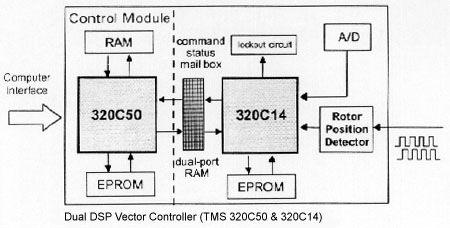
Fig. 4. Block diagram of the dual-DSP based digital controller for experiments on digital signal processing and microcomputer control. up
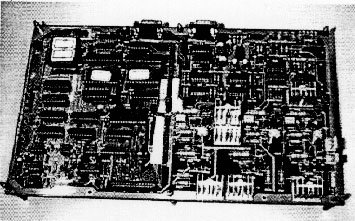
Fig. 5. Constructed prototype of the dual-DSP based digital controller. up
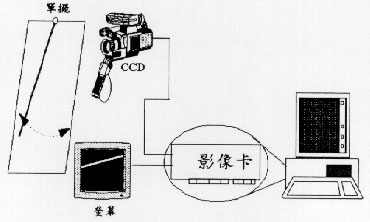
Fig. 6. Position detection of a swing pendulum by real-time image processing.
Fig. 6 shows the system block diagram of position detection of a swinging pendulum by real-time image processing. The image of the swinging pendulum is detected every 0.01 sec by the image card and then its deviation angle is computed by FPGA based real-time image processing algorithm. This deviation angle is then used for the balancing control of the pendulum.
Fig. 7(a) shows the front panel of the constructed PWM amplifier module and (b) is its main printed-circuit board. Intelligent power module (IPM) has been employed in the construction of the PWM amplifier. The PWM switching frequency can be adjustable from l kHz to 20 kHz. Fig. 8 shows the system architecture of an interactive digital control development system for power electronics and motion control using the developed DSP control module and PWM amplifier module.
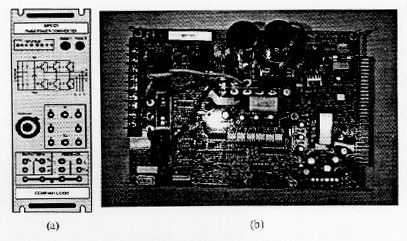
Fig. 7. (a) Front panel of the PWM amplifier module and (b) main printed-circuit board of the PWM power amplifier. up
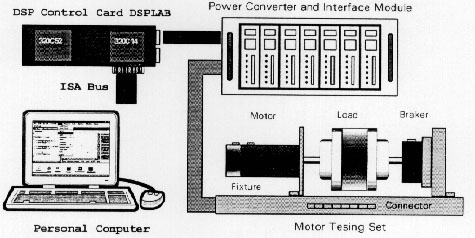
Fig. 8. System architecture of the interactive digital control development system for power electronics and motion control. up
An one-dimensional inverted pendulum balancing mechanism, as shown in Fig. 9, has been constructed in the first year of this project. All these sub-projects, under the coordination of the main project, has been successfully integrated as a workable experimental system for teaching automatic control and mechatronics engineering. This project in its second year task is to construct a two-dimensional working platform for the integration of all the other projects. In its third year, refinement of the balancing mechanism for the one-dimensional and two-dimensional moving tables will be proceeded.
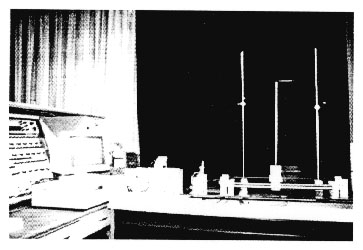
Fig. 9. DSP-based digital controller for experiments on digital signal processing and microcomputer control. up
This paper has presented the design and implementation of a modular experimental system for the education of mechatronics engineering. A kernel laboratory course for the education of mechatronics engineering has been developed. We also developed a series of laboratory course notes on DSP, fuzzy control, power electronics, image processing, and motion control. The constructed modular experimental system still needs more investment on the improvement of its subsystems and development of more laboratory course notes. The subset of this modular experimental system has already been used in several courses for experimental study which includes "digital signal processing practice", "control system practice", "sensing and measurement", and "power electronics" in the Department of Control Engineering of National Chiao Tung University, Taiwan, Republic of China. Students have shown great excitement and enthusiasm, this makes the teaching of these course most satisfying and encouraging. The designed system were also employed in several research projects in this department.
[ l ] T. More, "Mecha-tronics," Yaskawa Internal Trademark Application Memo 21.131.01, July 12, 1969.
[2] Japan Trademark Registration, no. 946594, Jan. 1972.
[3] N. Kyura and H. Oho, "Mechatronics - an industrial perspective," IEEE Transactions on Mechatronics, vol. 1, no. 1, pp. 10-15, March 1996.
[4] F. Harashima, M. Tomizuka, and T. Fukuda, "Mechatronics - What Is It, Why, and How?"an editorial, IEEE Transactions on Mechatronics, vol. 1, no. 1, pp. 1-4, March 1996.
[5] R. Comeford,: "Mech . . . what?" IEEE Spectrum, pp. 46-49, Aug. 1994.
[6] D. M. Auslander, "What is mechatronics?" IEEE Transactions on Mechatronics vol. 1, no. 1, pp. 5-9, March 1996.
[7] D. K. Miu, Mechatronics: Electromechanics and Contromechanics, New York, Springer-Verlag, 1993.
[8] J. R. Hewit, Mechatronics:, New York, Springer-Verlag, 1993
[9] M. K. Masten, "An industrial challenge to control system educators," in Preprints 1991 IFAC Conf: Advances in Control Education, Boston, MA, pp. 1-6, June 1991.
10] S. Saba, "Electronics challenges for innovation in industrial and social systems," in Int. Power Elec. Conf. Rec., Tokyo, Japan, pp. 1 -4, 1983.
[11] Workshop Proc. on Development power electronics curriculum: courses, hardware and software laboratories, March 24-26, 1996, Orlando, Florida, USA.
[12] P. Hsu, "Dynamics and control design project offers taste of real world," IEEE Control Syst. Mag, pp. 31-38, Jun. 1992.
[13] G. F. Franklin and J. D. Powell, "Digital control laboratory courses," IEEE Control System Magazine, vol. 9, no. 3, pp. 10-13, April 1989.
[14] U. Ozguner, "Three-course control laboratory sequence," IEEE Control System Magazine, vol. 9, no. 3, pp. 14-18, April 1989.
[15] S. Mori, H. Nishihara, and K. Furuta, "Control of unstable mechanical system control of pendulum,"Int. J. of Control, pp. 673-692, vol. 23, 1976.
[16] K. Furuta and M. Yamakita, "A new inverted pendulum apparatus for education." in Preprints 1991 IFAC Conf: Advances in Control Education, Boston, MA, pp. 191-196, June 1991.
[17] Q. Wei, W. S. Levine, and W. P. Dayawansa, "An experiment to demonstrate the bandwidth requirements of a nonlinear controller," in Preprints 1991 IFAC Conf: Advances in Control Education, Boston, MA, pp. 183-185, June 1991.
[18] K. Pritchard, "PC-based simulation in control system design," Control Engineering, vol. 40, pp. 31-32, 1993
[19] Texas Instruments, Digital Control Applications with TMS320 Family, Selected Application Notes, 1991.
[20] H. Le-Huy, "Microprocessors and digital IC's for motion control," IEEE Proc., vol. 82, no. 8, pp. 1140-1163, Aug. 1994.
[21] R. C. Luo, "Sensor technologies and microsensors issues for mechatronics systems," IEEE Transactions on Mechatronics, vol. 1, no. 1, pp. 39-49, March 1996.
[22] P. Lee, Industrial Sensors. NJ: Technical Insights, Inc., 1985.
[23] T. M. Jahns, "Motion control with permanent-magnet ac machines," IEEE Proc., vol. 82, no. 8, pp. 1241-1252, Aug. 1994.
[24] R. D. Lorentz, T. A. Lipo, and D. W. Novotny, "Motion control with induction motors," IEEE Proc., vol. 82, no. 8, pp. 1215-1240, Aug. 1994.
[25] Y. Dote, Servo Motor and Motion Control Using Digital Signal Processors. Prentice Hall and Texas Instruments Digital Signal Processing Series, 1990.
1. This work was supported by the National Science Council, Taipei, Taiwan, R.O.C. Project no. NSC84-2512-S-009-001. Ying-Yu Tzou is with the Department of Control Engineering, National Chiao Tung University, 30050, Hsinchu, Taiwan, R.O.C.